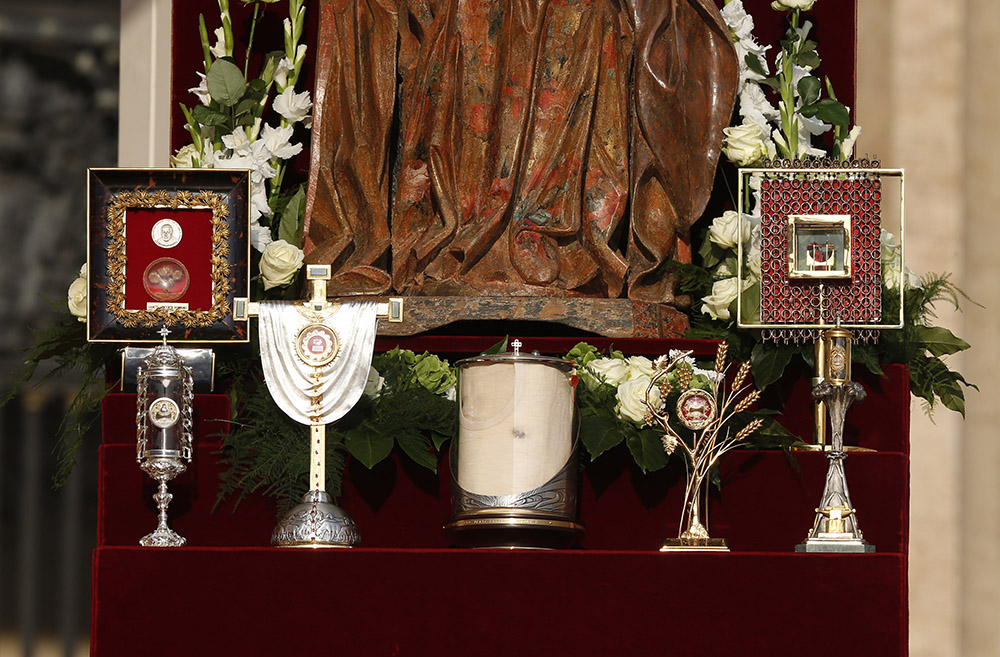Although more than a common part of Catholic culture and practice, the veneration of relics has been practiced less during the last 50 years or so. But that seems to be changing in recent years, as a number of saintly relics have been traversing the United States, attracting large numbers of the faithful. Relics seem to be making a comeback, and in a big way.
And yet the veneration of relics in the Catholic tradition can be misunderstood easily. At first glance it can appear to be displaced praise. Critics would falsely claim that praise or worship is accorded to the relic or saint rather than God himself, who, of course, is rightly the only subject of all worship.
A proper understanding of relic veneration, however, is best achieved with an appropriate approach. It would simply be incoherent to think that a Catholic or Christian would offer praise and worship to anyone other than God. And yet, honoring the saints — and their relics — is also an important part of what we do.
In order to develop a proper understanding of the place of relics in the Christian tradition, it might be helpful to consider them within a different context — that of family. It’s not uncommon for many people to honor the memory of their loved ones by keeping pictures of family around the house. Nor is it uncommon to keep cherished belongings of our deceased loved ones, like grandma’s jewelry or grandpa’s Bible. These belongings likely are treasured, and treated with honor and reverence. They’re kept in safe and honorable places. They’re well-packaged when we move. They’re often handed on from one generation to the next. These secular “relics” assist us in recalling the person and his or her life, and the memories that remind us of who they were and what they were about.
It is not rare to honor remnants of relatives’ bodies, or those of notable people. Often parents will keep first teeth that are lost or save clippings of their child’s first haircut. We build monuments to great men and women, and set up grave markers to memorialize them. And so it seems almost second nature for us to honor members of our family and those dear to us as well as the objects that belonged to them.
And so why wouldn’t a similar reverence translate into our family of the Church? The saints are those men and women from our family who are deserving of our honor for their life of spiritual greatness. Moreover, they have put on Christ in baptism and beocme members of his body.
Catholics see the members of the Church as members of a family. Of course, as human beings — composites of body and soul — the Church honors their bodies after death. We, of course, do this as well in our families when we visit and decorate graves on birthdays, death dates or holidays. Made in God’s image and likeness, we recognize the dignity of the human person by honoring their earthly remains — that is why the Church demands of proper disposal of a person’s remains (burial of body or cremains).
Within this context, then, we should understand that relics are meant to be honored and venerated, not worshipped. In fact, the saints lead us to fuller worship of God in spirit and truth. By honoring their memories, bodies and belongings, we give thanks to God for the saint’s holy witness. Relics are physical, tangible, concrete reminders that heaven is obtainable for us — so long as we recognize what made the saints holy and work to apply those qualities to our lives. When venerating relics we express gratitude to God for those members of our spiritual family. In the presence of the relics we recall their holy lives and we pray for the grace to achieve what they’ve achieved — eternity with God in Heaven.
Michael R. Heinlein is editor of Simply Catholic. Follow him on Twitter @HeinleinMichael.

